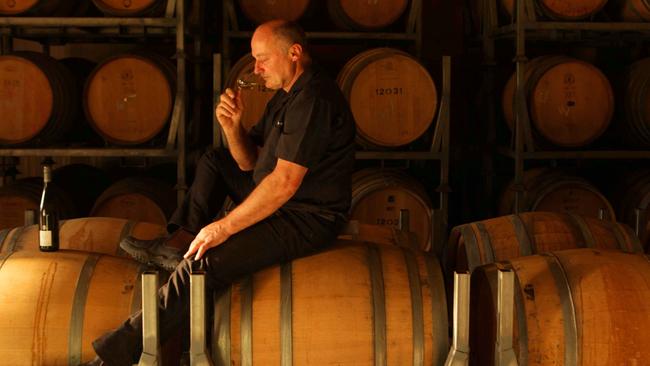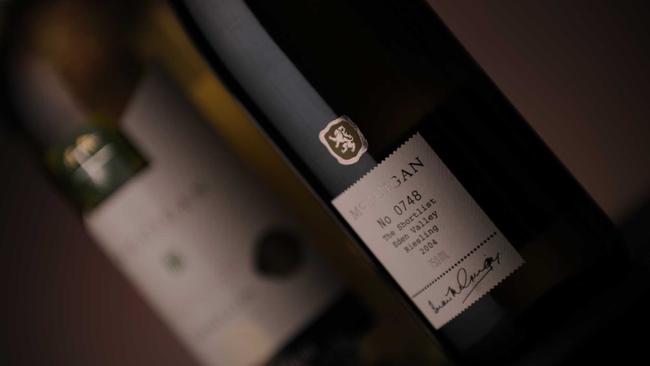The maker of McGuigan wine has warned of a weaker consumer outlook
Another winemaker has joined the list of consumer brands like Domino’s and Baby Bunting warning a consumer slowdown is quickly growing across retail.

Australian Vintage, the maker of top-selling wine McGuigan, has warned its annual profit is set to almost halve as it is forced to swallow around $26m in inflationary costs that it has struggled to pass on to the consumer as a downturn in discretionary spending hollows out its earnings.
It is the latest discretionary retailer to signal a sharp and significant slowdown in the spending habits of consumers.
The cumulative weight of a dozen interest rate hikes by the Reserve Bank, rampant inflation and crunched household budgets is now bruising the retail sector, from wine and baby products to pizza and diamond rings, with analysts fearing more corporate confessions to come.
Australian Vintage has also revealed in a trading update to the market on Thursday that lower vintage and throughput – caused partly by poor weather conditions – would force it to book $9m in write-offs at its winery while as its corporate debt remains bloated it will also need to suspend future potential dividend payments.
The ASX-listed group, whose wines include McGuigan, which is one of the biggest selling red wines in Australia and Britain, as well as labels Nepenthe and Tempus Two, is the latest retail brand to warn of deteriorating conditions in the economy and a pullback in consumer spending.
Only last month Treasury Wine Estates, the makers of Penfolds, Wolf Blass and Lindemans, issued its own profit warning off the back of slower sales and weaker consumer sentiment with other retailers in the last few weeks such as Domino’s Pizza, Michael Hill jewellers, Maggie Beer foods, fashion chain Universal Store and Baby Bunting issuing their own pessimistic earnings outlooks.

Australian Vintage, which has a market capitalisation of $115m, said on Thursday that its 2023 results were still in line with expectations, but there would be one-off impacts driven by the worsening trading environment while inflationary pressures in its business remained a major headache.
The winemaker said 2023 has been challenging, with the company absorbing around $26m of hyperinflationary costs over the past two years and being limited in its ability to pass on these costs given the impact of market discounting at the top-line.
While a material portion of these hyperinflation costs such as freight costs receded during the financial year, a portion continues to adversely affect the cost base.
Australian Vintage said the winemaker saw growth in its innovative wines, such as low and no alcohol wines, which had offset declines in the cheaper, value wine segment.
“Despite growth in market share by Australian Vintage across its key geographies, the overall business environment however remains challenging, with inflationary pressures across core geographies in the UK and Australia persisting,” the company said.
“Consumption trends in the value segment face pressure and whilst Australian Vintage has taken some price over fiscal 2023, it has been insufficient to offset inflationary pressures, and the ability to take further price is impacted by broader market competition.”
The wine group plans to strip $9m in costs from its business to help offset ongoing inflationary pressures.
Australian Vintage said it expects revenue of $255m to $260m for 2023, against $260.1m in 2022. However, underlying earnings would be as low as $26m, against $45.7m in 2022, while reported earnings of $34m to $36m would be down against reported earnings of $43.7m in 2022.
Net debt of $52m to $57m was against debt of $74.5m at June 2022. However, Australian Vintage will suspend future dividends until net debt to earnings is below two times.
“We remain confident in our strategic plan and are highly enthused by the performance of our innovative and premium brands,” said chief executive Craig Garvin.
“We continue to gain market share across all key geographies despite the tough trading environment. We are making proactive decisions today to both improve our financial performance as well as our ability to operate with agility to our strategic plan.”






To join the conversation, please log in. Don't have an account? Register
Join the conversation, you are commenting as Logout